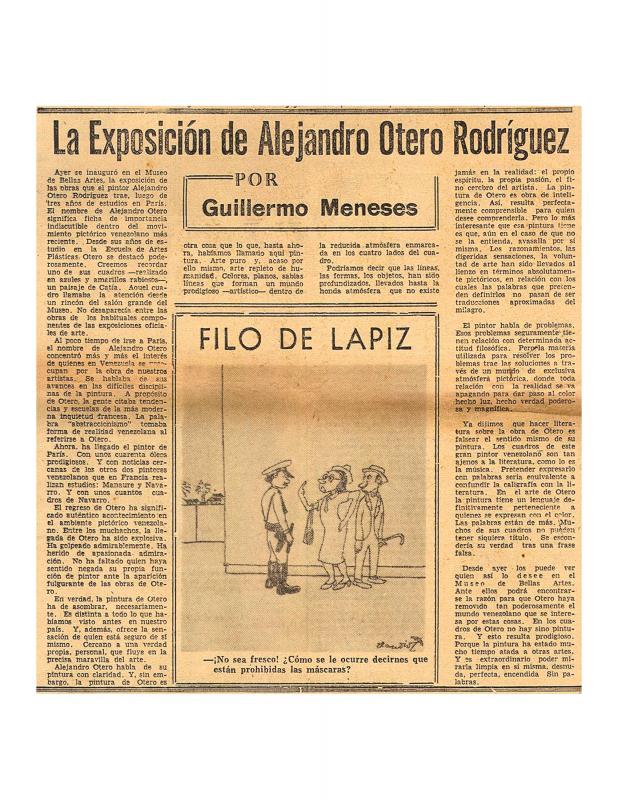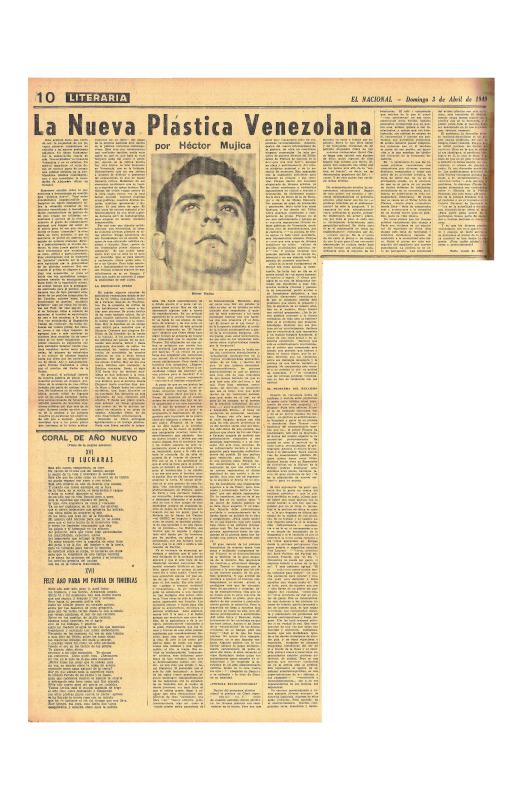In 1962, Venezuelan painter and sculptor Alejandro Otero (1921–1990) began to develop in Paris his series of Ensamblajes and Encolados, based on the incorporation of fragments of doors, tools, and manuscripts. After taking the tenets of geometric abstraction and the synthesis of forms to their limits within the pictorial sphere (see the Cafeteras [Coffee Pots] and Líneas coloreadas sobre fondo blanco series [Colored Lines on a White Background])—as well as delving into the dissolution of line within monochromatic works at the beginning of the 1960s, Otero dabbled in a tri-dimensionality born of Cubist strategies. Nevertheless, this was also a reflection of the new inquiries arising out of informalism. Within the framework of this era, critic and philosophy professor J. R. Guillent Pérez proposed an investigation owed especially to existentialism and ontology. The author’s study of Otero’s career (who had participated in Los Disidentes group in the 1950s) supports the theory of a radical change in course. In this way, Guillent Pérez creates a conceptual bridge between existentialism and the abstract and informalist trends; in his judgment, both represent solutions emerging from the collective imagination due to the decline of absolute being: years later, the author would assert that traditional painting had died after [the emergence of] informalism.
The author’s posture is enthusiastic compared with others who were reticent to accept these avant-garde concepts: his participation in Los Disidentes group should be noted (Paris 1950)—while he was studying philosophy in France—one of his goals then was to promote geometric abstraction in Venezuelan art. This text not only makes visible the relationships among dissimilar aesthetic principles, it also establishes a continuity in the understanding of these ideas as autonomous realities, which are illustrative of a reality “in and of themselves.”
For other critical texts on Otero’s work, see the ICAA digital archive: essay by Guillermo Meneses, “La exposición de Alejandro Otero Rodríguez” [The exhibition of Alejandro Otero Rodríguez] (doc. no. 1097092); essay by Roberto Guevara, “La vertical vibrante de Maracay, 1968” [The Vibrating Vertical Structure of Maracay, 1968] (doc. no. 1168201); the text included in the exhibition catalogue Alejandro Otero (1949) (doc. no. 850732); the essay by journalist Héctor Mujica, “La nueva plástica venezolana” [The New Venezuelan Art”] (doc. no. 850512) and the essay by writer Elizabeth Schon, “Los coloritmos de Alejandro Otero” [The Color-Rhythms of Alejandro Otero” (doc. no. 1172142)].





